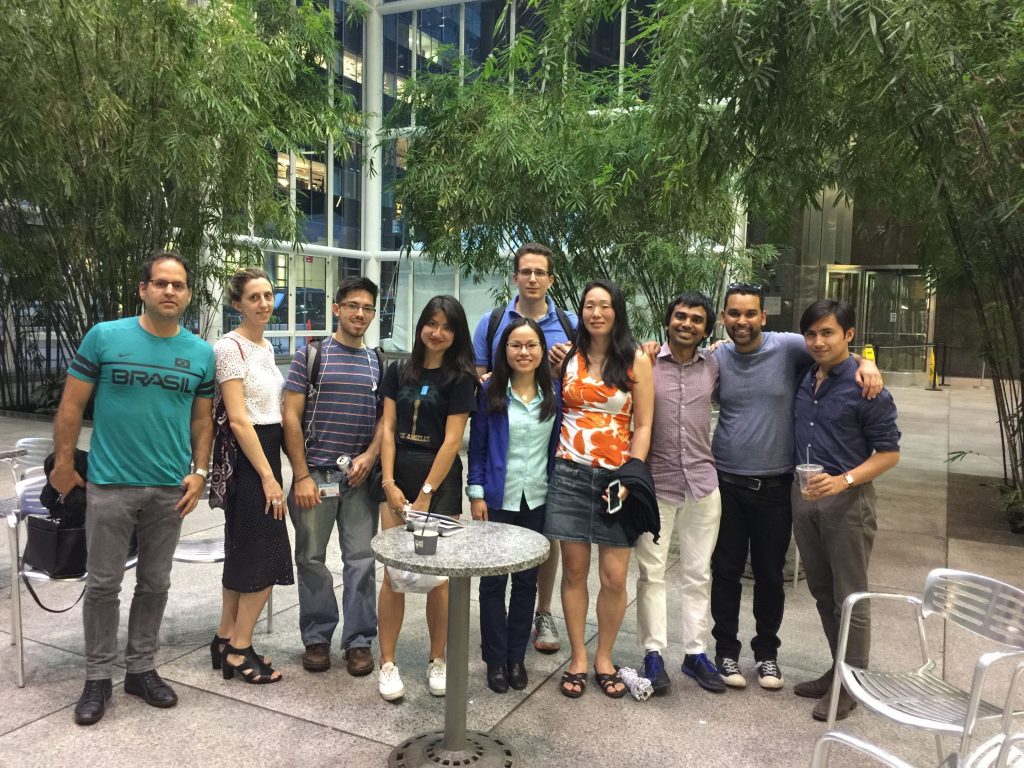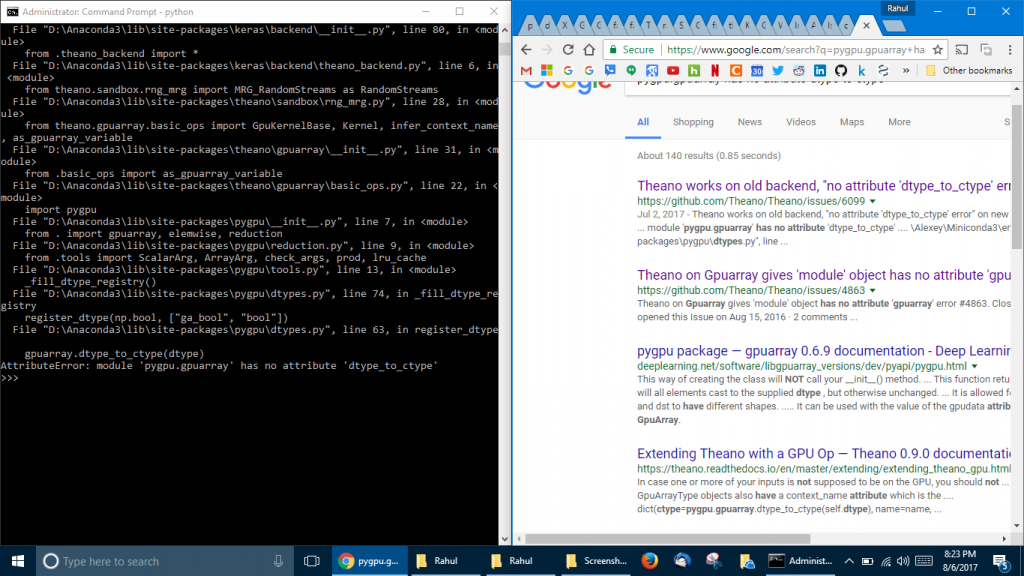I am part of a great AI community in New York. Today was the fourth week of an ongoing effort to share the practical tricks to developing a natural language processing pipe line using deep learning. This effort was borne out of my efforts to engage the community to develop a greater understanding of how artificial intelligence systems are developed. At a time when there is a lot of fear, uncertainty and doubt (FUD) about AI, I firmly believe community engagements like these are helpful to not only reduce the mistrust in AI systems, but also disseminate new ideas and achieve some collective learning.
During the course, I encountered an interesting error. The python development environment I was running was refusing to load a key library for performing deep learning: called Keras. The error was related to the deep learning back end called theano, specifically linked to a python package called pygpu. I was really surprised that I wasn’t able to load Keras on my system. It was completely new error for me, possibly related to some extra installations I performed last week for a separate project I was working on.
The error was: AttributeError: module ‘pygpu.gpuarray’ has no attribute ‘dtype_to_ctype’
Even though the solution for the problem was found after the sessionwas over, I am documenting the process of mine. This Keras error also taught me two important things today:
- Test your environment before D-day. Assumption is the mother of all fuck-ups and today, I assumed everything is going to work fine and it didn’t.
- Be persistent and never give up before you find a solution.
Step 1: Since I am using Anaconda distribution for Python 3, I uninstalled and re-installed the deep learning back end: Theano and the front end: Keras. To uninstall theano and keras run the following lines in command line or terminal.
conda uninstall theano conda uninstall keras
Step 2: Reinstalling the deep learning backend and front end, along with a missing dependency called libgpuarray. Run the following lines in command line or terminal to install libgpuarray, theano and keras.
conda install libgpuarray conda install theano conda install keras
Step 3: Remove the offending package called pygpu from the python environment.
pip uninstall pygpu
Step 4: Create a .theanorc.txt file in the home directory. Since I am running a Microsoft Windows development environment, the home directory is: C:\Users\Username\ and once inside the home directory, create a .theanorc.txt file and copy and paste the following lines:
[lib] cnmem = 0.8 [nvcc] fastmath = True from CPU: [global] openmp=True device = cpu floatX = float32 allow_input_downcast=True [blas] ldflags= -lopenblas
By following these four simple steps, I was able to solve the issue. Even though the error message was really lengthy and intimidating, and initially I thought I may have to completely re-install my development environment, I am really proud of myself that I have discovered a fix for a really annoying, yet poorly documented problem with the pygpu package.
Kudos to Anthony, the founder and co-organizer of the meetup group for building a great AI community here in New York. We work really hard to bring this awesome course every week. To make these lessons always accessible, free and at the same time support our efforts, consider becoming our patron.
I am also part of a great deep learning company called Moad computers. Moad brings excellent, incredibly powerful deep learning dev-ops servers with all the necessary software packages pre-installed to develop artificial intelligence applications. The mission of Moad is to make the AI development efforts as friction-less as possible by creating a powerful opensource dev-ops server for AI. Check out the Moad computers’ store for the most recent version of these servers called Ada for AI.


